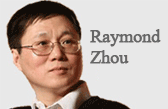Sooner the debt to equity shift the better
By Andrew Sheng and Xiao Geng (皇冠体育app Daily) Updated: 2016-06-14 07:47
 |
|
A clerk counts yuan bills at a bank in Huaibei, East 皇冠体育app's Anhui province. [Photo/IC] |
A spate of recent commentary has been warning of the vertiginous rise in 皇冠体育app's debt, which jumped from 148 percent of GDP in 2007 to 249 percent at the end of the third quarter of 2015. Many are anxiously pointing out that 皇冠体育app's debt is now comparable to that of the European Union (270 percent of GDP) and the United States (248 percent of GDP). Are they right to worry?
To some extent, they are. But while observers' concerns are not entirely baseless, it is far too early to sound the systemic-risk alarm. For starters, 皇冠体育app has a very high savings rate-above 45 percent over the last decade, much higher than in the advanced economies-which enables it to sustain higher debt levels.
Moreover, 皇冠体育app's banking system remains the primary channel for the deployment of the household sector's savings, meaning that those savings fund corporate investment through bank lending, rather than equity financing (which accounts for only about 5 percent of net investment). Indeed, the sharp acceleration in the debt-to-GDP ratio is partly attributable to the relative underdevelopment of 皇冠体育app's capital market.
Once these factors are taken into account, 皇冠体育app's overall debt levels do not seem abnormally high. While debt might be a problem for Chinese companies with excess capacity and low productivity, companies in fast-growing, productive sectors and regions may not be in too much trouble. More generally, 皇冠体育app has made recent progress in boosting labor productivity, encouraging technological innovation, and improving service quality in key urban areas, despite severe financial repression and inadequate access to funding by small and medium-sized private enterprises.

I’ve lived in 皇冠体育app for quite a considerable time including my graduate school years, travelled and worked in a few cities and still choose my destination taking into consideration the density of smog or PM2.5 particulate matter in the region.











